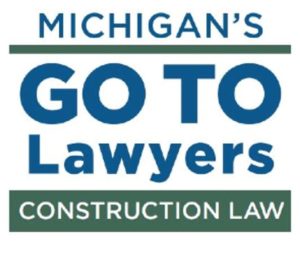The Removal of Uninvited Guests
In October 2016, we informed you of two Obama-era Department of Labor Guidance Memos (2015 and 2016) which opened up many employers to a host of employment issues for individuals hired as independent contractors or under some degree of contractual control. We suggested, only partially tongue-in-cheek, that employers should consider a larger banquet hall with more tables for their next company party to accommodate all these newly minted employees. That all changed on June 7th as Labor Secretary Alex Acosta announced the withdrawal of these two Guidance Memos effective immediately.
The Withdrawn Guidance Memos
Department of Labor Guidance Memos do not have the force of law but indicate the Department’s interpretation of the laws it enforces. As such, employers who flout a guidance have to live in fear of enforcement actions or lawsuits that can expose them to significant financial consequences. The 2015 and 2016 Guidance Memos that were withdrawn were particularly troublesome to employers because they indicated that most workers are employees rather than independent contractors under the Fair Labor Standards Act and that many business relationships constituted joint employment so that one employer could be held accountable for the wage and hour violations of the other. Having an independent contractor reclassified as an employee has significant consequences in terms of minimum wage, overtime, workers compensation and unemployment as well as whether the employer has sufficient employees to fall within the requirements of other laws that are triggered by a count of employees such as the Family Medical Leave Act. To be defined as a joint employer with another entity not only exposes an employer to the wage and hour sins of the other entity but also other statutory violations such as discrimination and unfair labor practice claims.
The withdrawn Guidance Memos were particularly troublesome to employers who had increasingly shifted to the use of independent contractors and staffing agencies to populate the work force. This created flexibility with staffing and at the same time relieved them of the added costs of benefits and other protections afforded to employees. The Guidance Memos stood as roadblocks to these efforts with the joint employment guidance being of greatest concern as it asserted that joint employment existed even in circumstances where an employer exercised only indirect control over the employees of the other entity. This caused particular concerns amongst franchisors and contractors that imposed work place rules upon franchisees and subcontractors.
What Does the Withdrawal Mean?
In its statement announcing the decision, the Department of Labor stated the removal of the administrator’s guidance “does not change employer’s legal responsibilities” under the Fair Labor Standard Act with the agency saying it “will continue to fully and fairly enforce all laws within its jurisdiction.” In practical terms, this simply recognizes that whether a guidance exists or not, the underlying statutes at issue remain in full force and effect and are subject to the normal process of interpretation by the agencies and the courts. In that regard, the tests used by the courts to determine whether someone is an employee or independent contractor are well entrenched and are typically based on the economic realities of the situation, such as:
- Is the work performed an integral part of the employer’s business?
- Does the worker’s managerial skill affect his or her opportunity for profit or loss?
- How does the worker’s relative investment compare to the employer’s investment?
- Does the worker perform tasks that require special skill and initiative?
- Is the worker’s relationship with the employer permanent or indefinite?
- What is the employer’s nature and degree of control over the worker?
These issues will need to be evaluated in order for an employer to determine the risk in treating someone as an independent contractor. But, with the withdrawal of the guidance on the issue, it will likely be a private plaintiff or an entity other than the Department of Labor that is taking on this issue in a given work place.
As for the joint employment issue, the guidance pushed the boundaries of the law by imposing joint employment obligations in situations where employers were only tangentially involved with one another. The removal of the guidance likely means that the traditional interpretations of the law, which required direct control by one entity over the employees of another, are more likely to be enforced so that employers can enter into contractual relationships with other entities with less fear of being found liable for the other’s employment issues. As with the independent contractor issue, it is expected that it will be a private plaintiff or other entity, such as the NLRB, seeking a joint employment determination with the Department of Labor’s enforcement eye looking at other issues.
Take Down the Additional Tables
Because of the withdrawal of the two Guidance Memos, employers can be more assured that they actually know whom they need to count as employees. Individuals who want a seat at the employee table will have to invite themselves without much help from the Department of Labor.
The Employment Practice Group at Rhoades McKee can assist employers in determining if the withdrawal of the Guidance Memos liberates them from the risk of having employees they never hired.
More Publications



